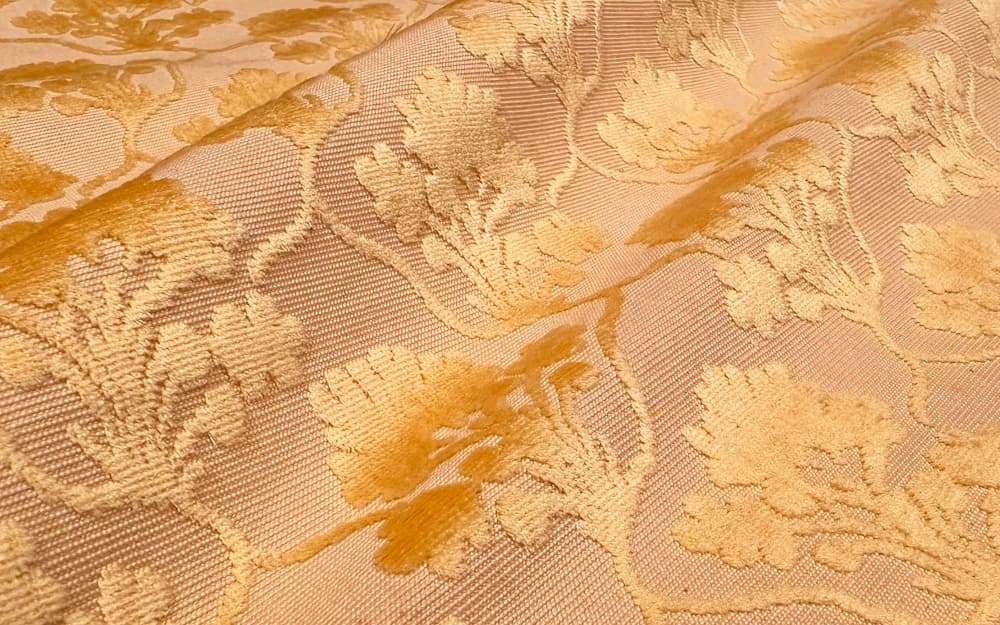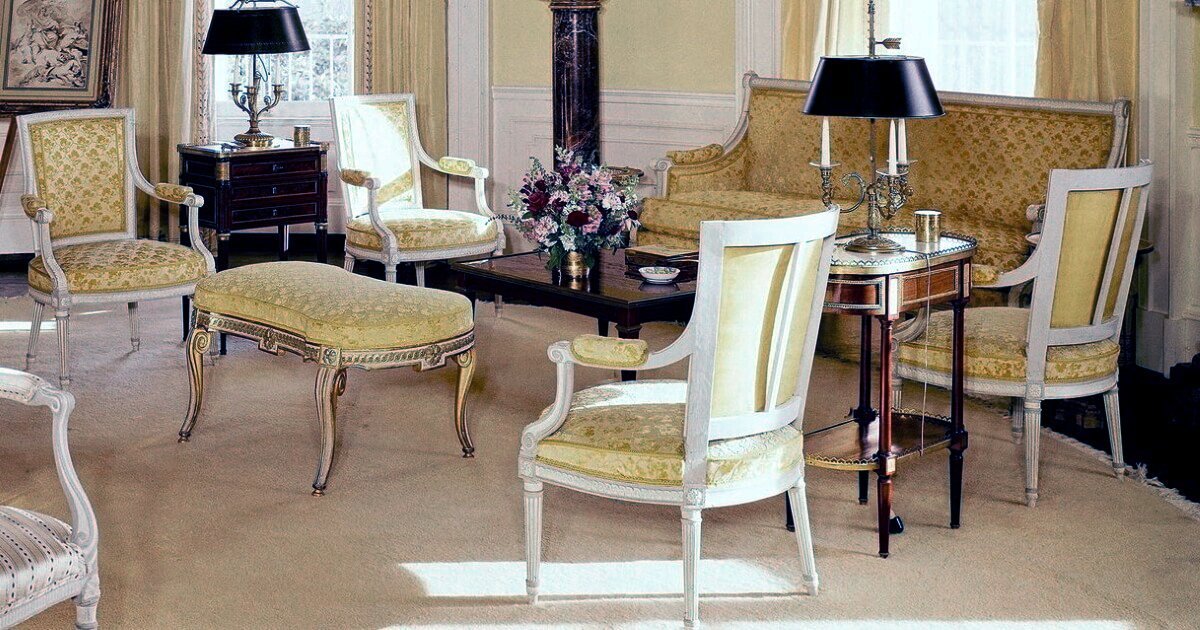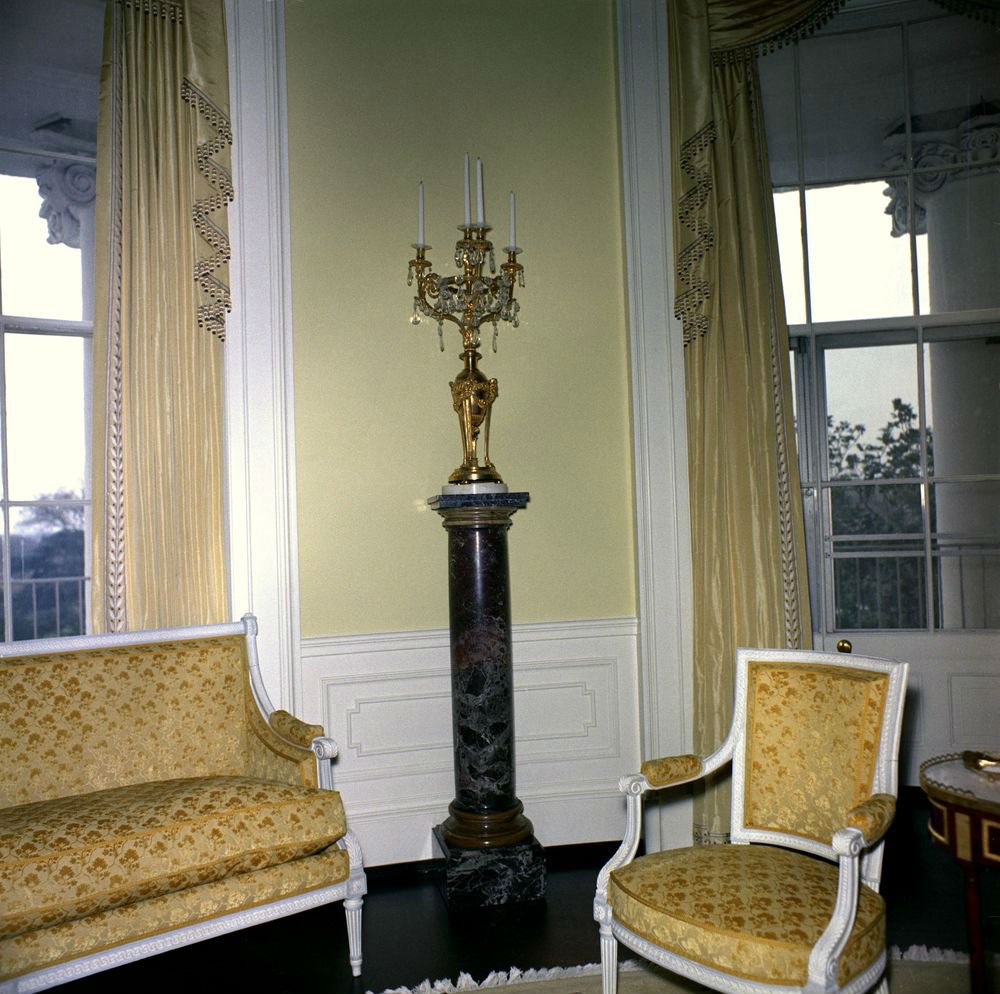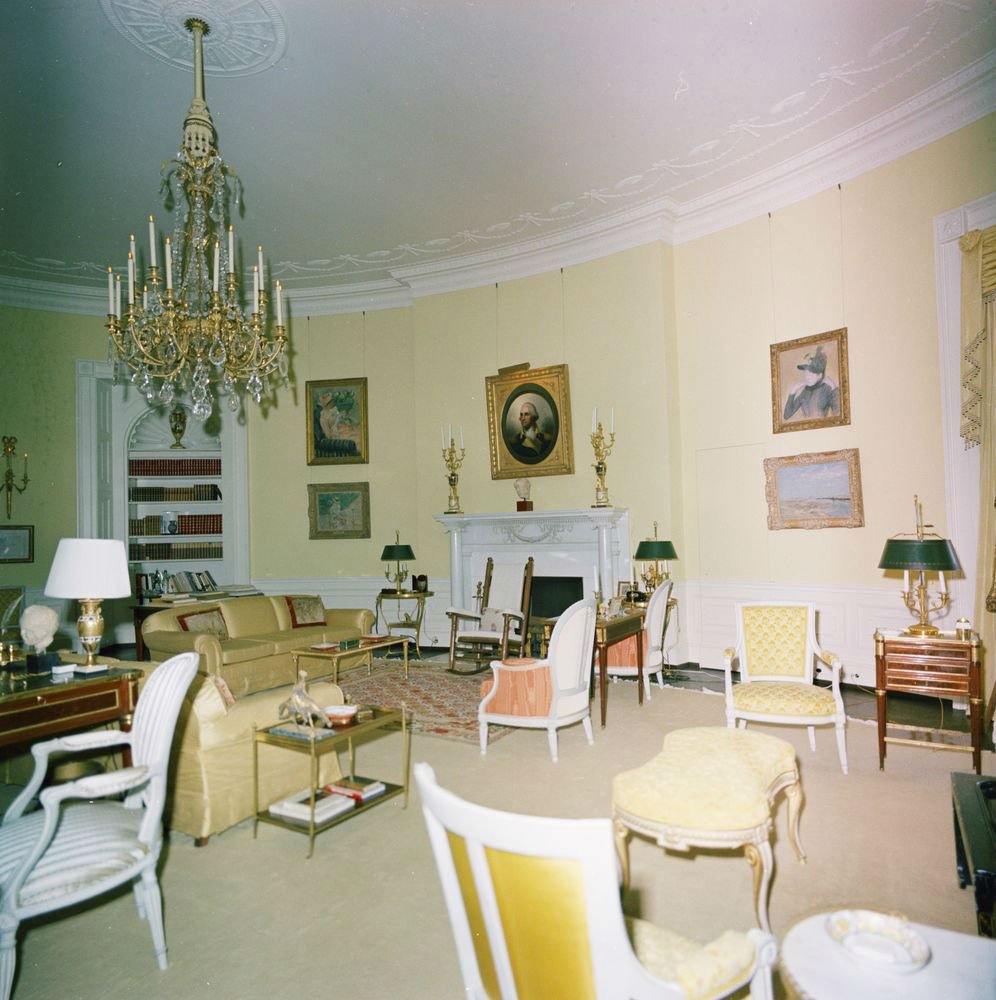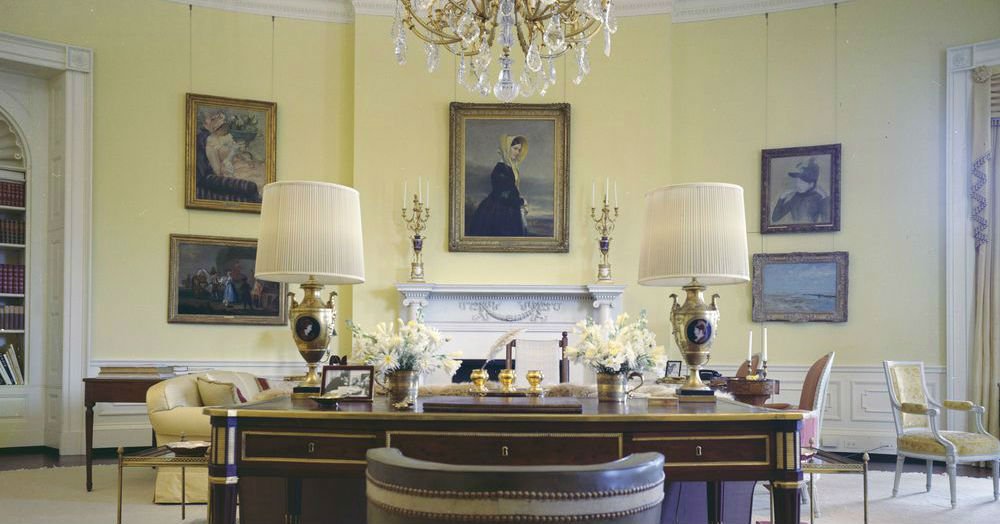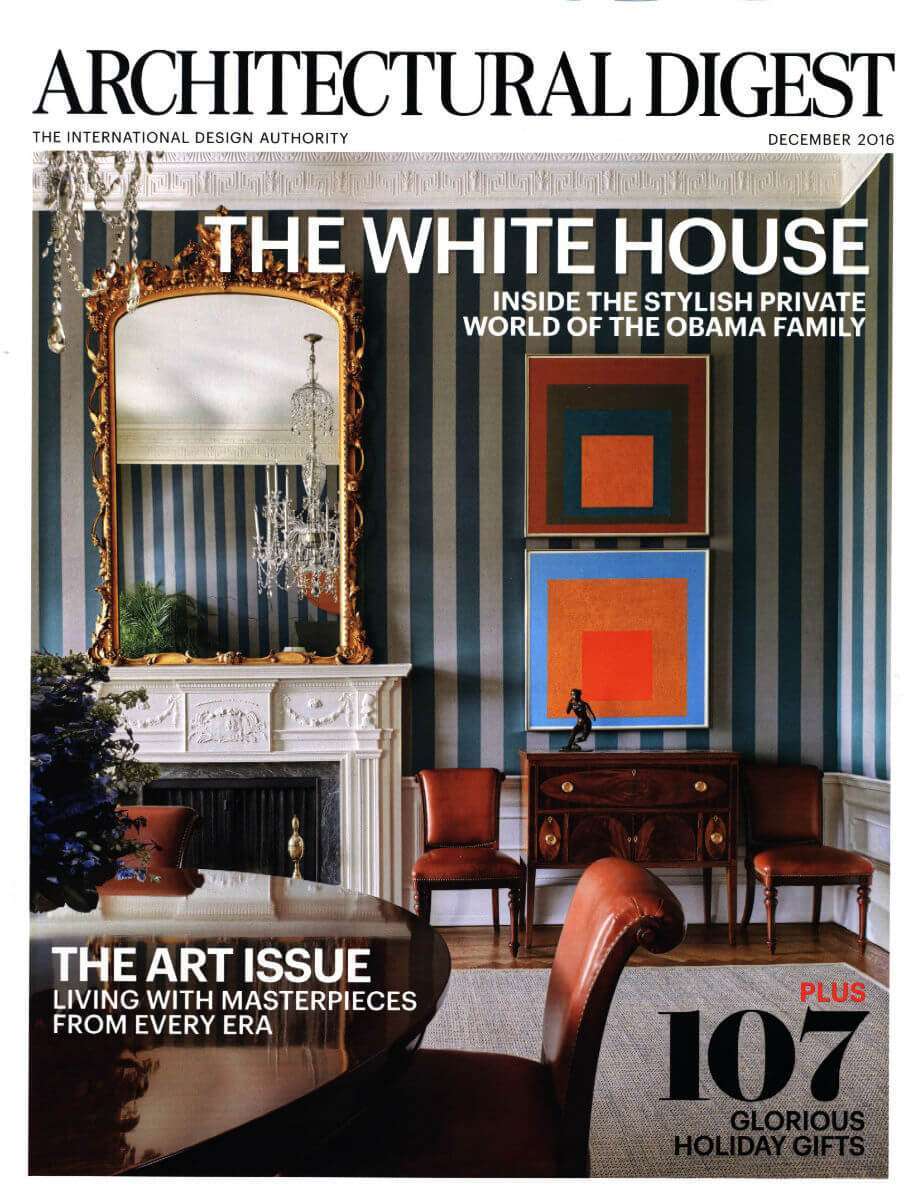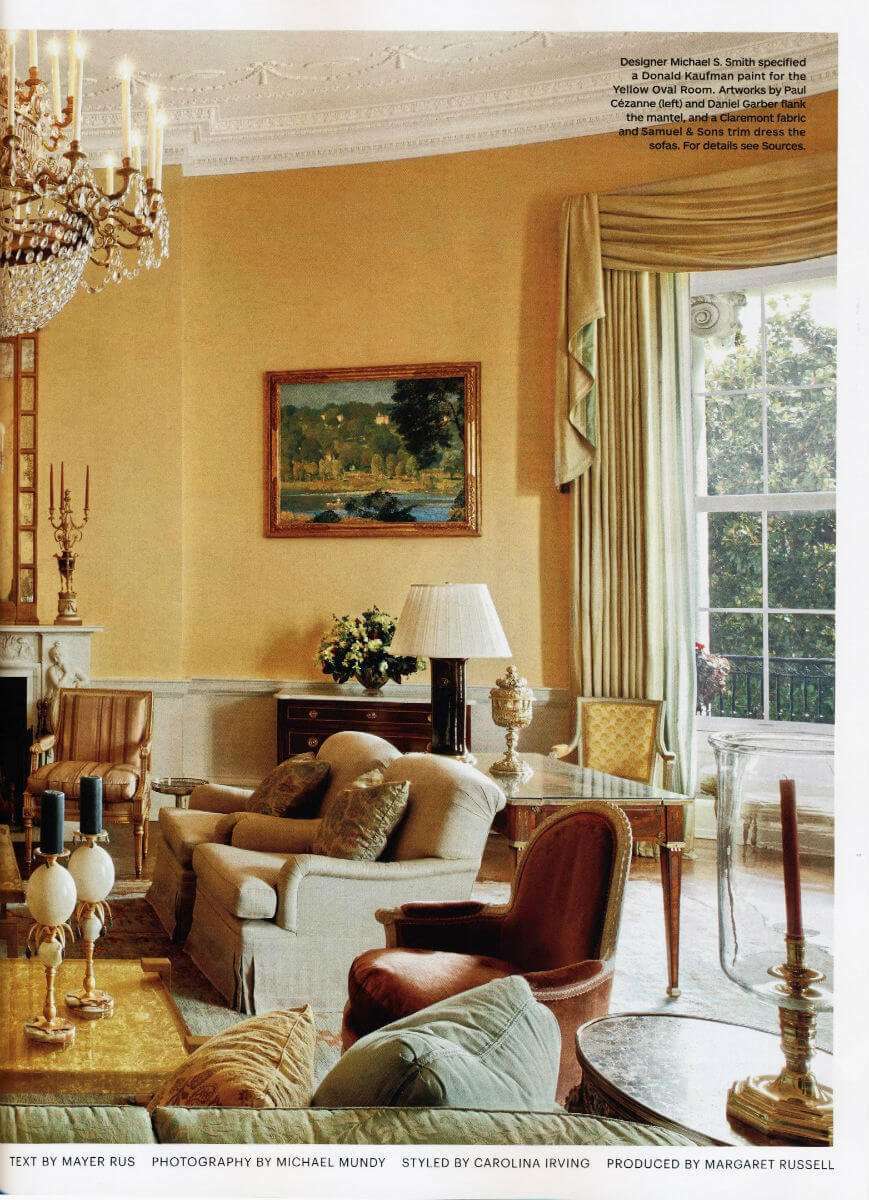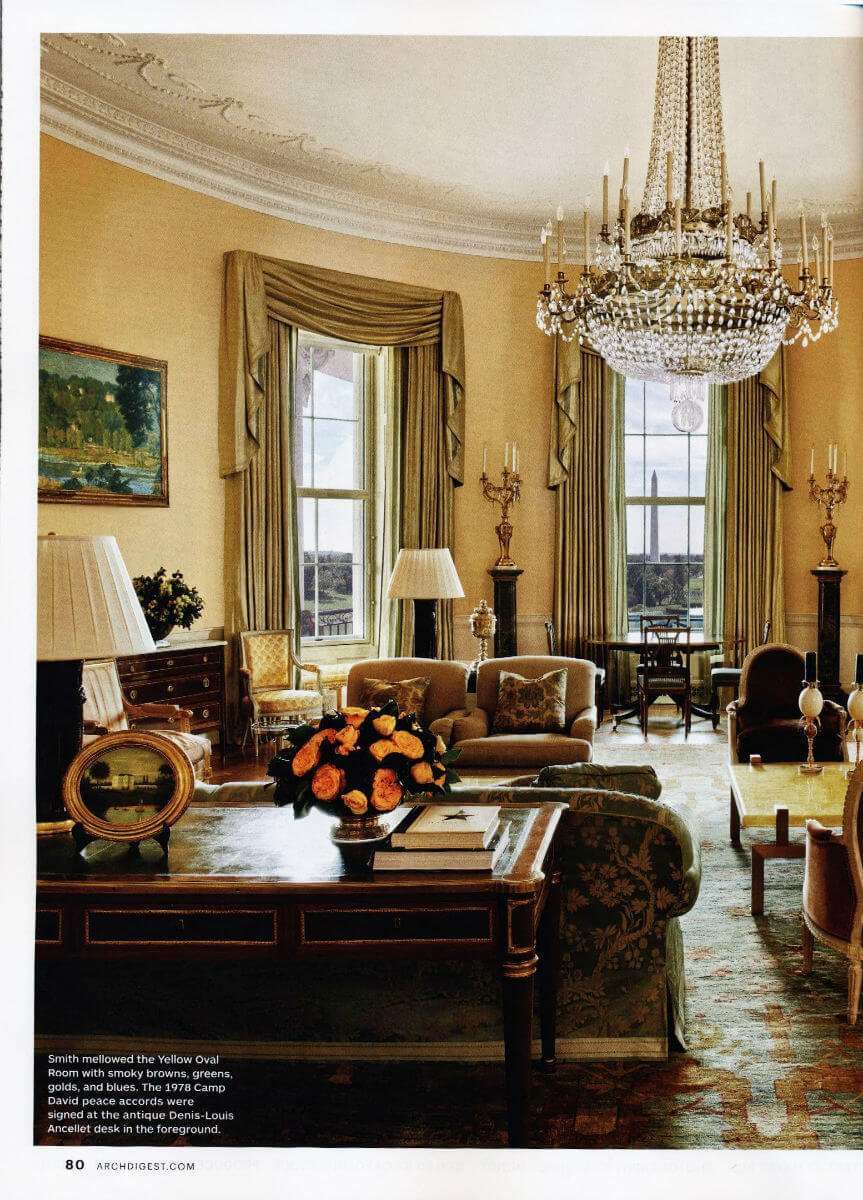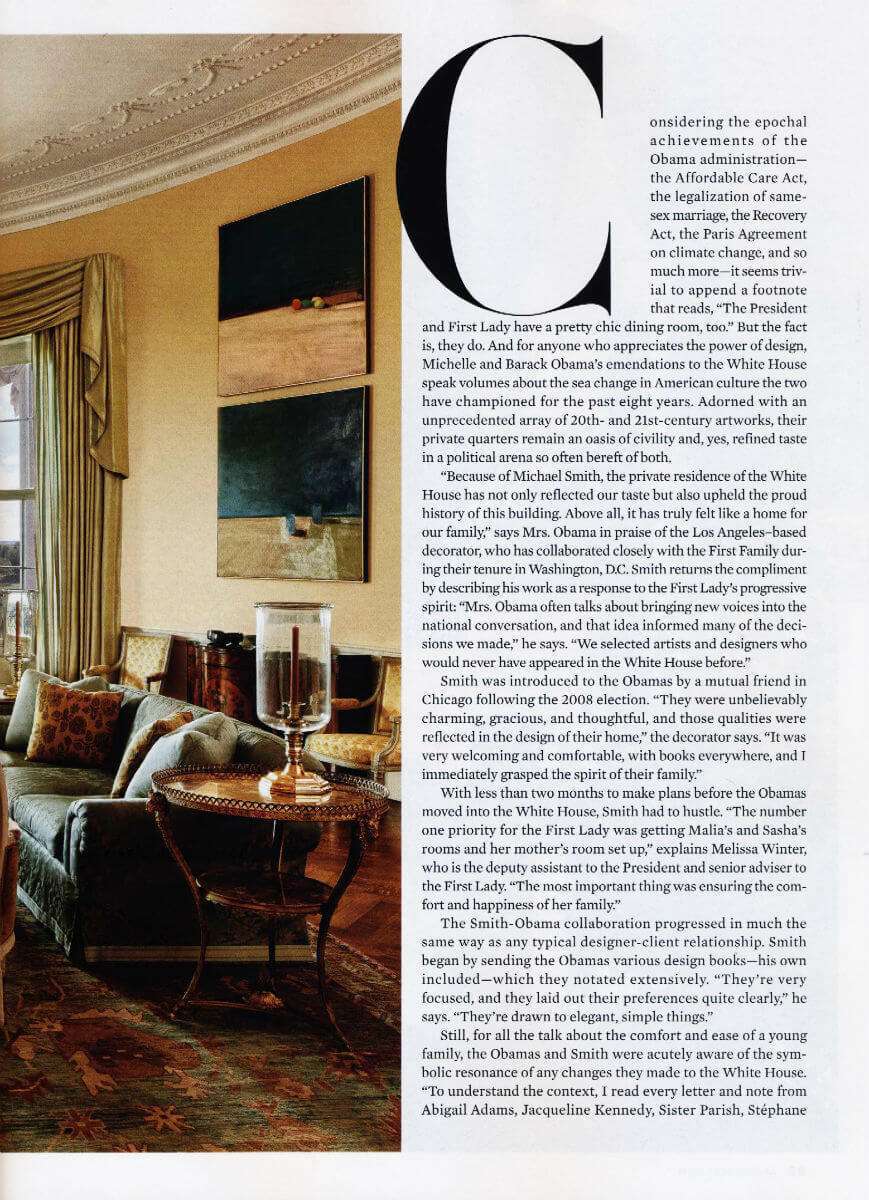The Casa Bianca velvet is one of the most famous in our collection of fine textiles. Handmade on looms dating back to the 1700s, it takes its name from a famous residence it helped to decorate: the White House in Washington, D.C. Below we explain its features and history.
The Casa Bianca Velvet Pattern
The Casa Bianca silk velvet features a pattern of diamonds outlined by thin, wavy lines that meander upward. Within each rhombus is a small tree with thick foliage, the trunk of which is covered with the berries and leaves of the oak, a popular tree in North America.
The decorative elements, typical of the late 18th century, have been reworked in an Art Nouveau context. This style is known for its depictions of the plant world, characterized by undulating and asymmetrical lines inspired by the sinuous forms found in nature.
Casa Bianca Cut Velvet in Golden Yellow Color
Casa Bianca Velvet Features and Colors
Casa Bianca 3378 cut velvet is still handmade in our Venice workshop on looms dating back to the 1700s. It belongs to our collection of handmade velvets, the finest in our entire production.
The width of the fabric reaches about 60 cm, a measurement that comes from the specific manual processing. During this process, the weaver cuts the silk threads with a special blade, moving from one edge of the fabric to the other to create the pile. The length of her arm determines the maximum possible extension for this passage, which requires extreme precision. This technique also lends its name to the velvet, called “cut”.
Both the pile and the ground of our Casa Bianca velvet are an elegant golden yellow. The pure silk pile reflects the light, creating a fascinating play of golden light. This effect gives the fabric a depth and understated elegance that enhances its value.
The handwork, which allows a maximum of 40 centimeters of fabric per day, also contributes to making this velvet a product of the highest quality.
Casa Bianca Cut Velvet in the Yellow Oval Room – The White House, Washington, D.C.
History and Interesting Facts About Casa Bianca Velvet
The Casa Bianca velvet takes its name from its use in the U.S. Presidential Residence in the 1950s. The fabric was selected in 1950 by Old World Weavers, a furniture restoration company founded by Iris and Carl Apfel. The couple ran the company until 1992, when it became part of Stark Carpet.
Iris and Carl Apfel worked on numerous interiors, including the White House, for nine presidents, beginning with Truman in the 1950s and ending with Clinton in the 1990s. Casa Bianca velvet was chosen to cover some of the furnishings in the Yellow Oval Room, such as the chairs shown in the 1962-’63 photos.
Casa Bianca Cut Velvet in the Yellow Oval Room – The White House, Washington, D.C.
The room officially received its distinctive color – and name – in the 1960s, thanks to renovations initiated by President Kennedy and his wife, Jacqueline. But the first person to choose yellow damask for the room was First Lady Dolley Madison, wife of the fourth president of the United States, James Madison, who served from 1809 to 1817. Yellow has been the dominant color in the room ever since.
The Yellow Oval Room – The White House, Washington, D.C.
During the restoration of the 1960s, Louis XVI-style furniture was chosen to make this room the ideal place to receive heads of state before dinner. A room of such importance required precious and representative fabrics, such as our silk velvet, whose oak leaf pattern is also a tribute to North America and the United States, a territory that boasts the largest variety of oak trees in the world.
The Yellow Oval Room – The White House, Washington, D.C.
Casa Bianca Velvet on Social Media and in the Press
Visualizza questo post su Instagram
Architectural Digest 12-2016
With its rich history and craftsmanship, the casa Bianca velvet represents the pinnacle of elegance and luxury. Its presence in the White House is a testament to its unparalleled quality and highlights how beauty is in the details.
Photos: Kennedy Library


